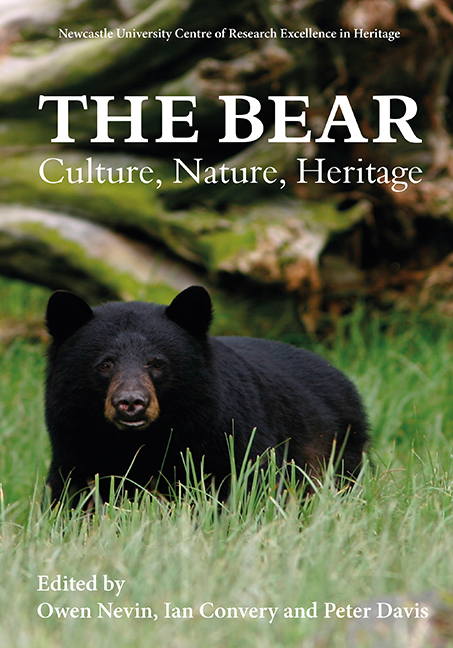Book contents
- Frontmatter
- Contents
- List of Illustrations
- Acknowledgments
- List of Abbreviations
- Foreword: The Bear: A Cultural and Natural Heritage
- Introduction: What is a Bear?
- Bear-People Interactions
- Bears in the Public Gaze
- Bear Biology, Management and Conservation
- Afterword: “It's Me Bear”: Reflections on a Unique Career Working with Bears
- List of Contributors
- Index
- Previous titles
9 - The Bear in the Museum
Published online by Cambridge University Press: 21 March 2020
- Frontmatter
- Contents
- List of Illustrations
- Acknowledgments
- List of Abbreviations
- Foreword: The Bear: A Cultural and Natural Heritage
- Introduction: What is a Bear?
- Bear-People Interactions
- Bears in the Public Gaze
- Bear Biology, Management and Conservation
- Afterword: “It's Me Bear”: Reflections on a Unique Career Working with Bears
- List of Contributors
- Index
- Previous titles
Summary
One of my earliest childhood memories was of a school visit to Towneley Hall Museum and Art Gallery in my home town of Burnley. Before the visit, rumours had been spreading amongst my classmates of the terror that would be felt when we came face-to-face with ‘the bear’. However, I rather liked him, and it is good to know that this Himalayan black bear is still there, standing at the top of the stairs, grasping a tree branch and threatening any visitor daring to enter his domain. In his original condition when arriving at Towneley he would have been less worrisome, having been sent around 1908 from Kashmir as a rug by a native of Burnley, William Theodore Taylor. The bear, mounted in his current menacing position in 1920, first appeared in the Towneley Hall exhibition catalogue in 1928. According to curator Mike Townend (4 April 2018, pers comm), ‘He has been the highlight, as well as the terrifying part, of many a child's visit and continues to be so.’ Websites now refer to him as ‘Towneley's famous bear’ and he acquired the name ‘Bill’ some 15 years ago for reasons unknown.
My next memorable bear encounter was at Sheffield Museum, where as a junior curator one of my tasks was to carve new wooden claws for the polar bear that stood on open display in the entrance hall; for some reason visitors felt fake bear claws were ideal mementoes of their visit to Weston Park. Despite its poor condition – and threatening gaze – the Sheffield public loved this bear and there was an outcry from local people when it was removed from display in the 1980s. Although a replacement polar bear was found and is also valued by visitors, Sheffield folk still remember the original specimen – now exhibited at Eureka in Halifax.
These two examples demonstrate that visitors to museums – especially local repeat visitors – clearly form an affinity with bears in museums. These mounted bears fascinate us, carrying the significance of their species and the environments they once inhabited. It is interesting that – rather like bears in zoos – they frequently receive familial names, a feature that Swinney (2011) terms ‘rampant anthropomorphism’.
- Type
- Chapter
- Information
- The Bear: Culture, Nature, Heritage , pp. 107 - 118Publisher: Boydell & BrewerPrint publication year: 2019

